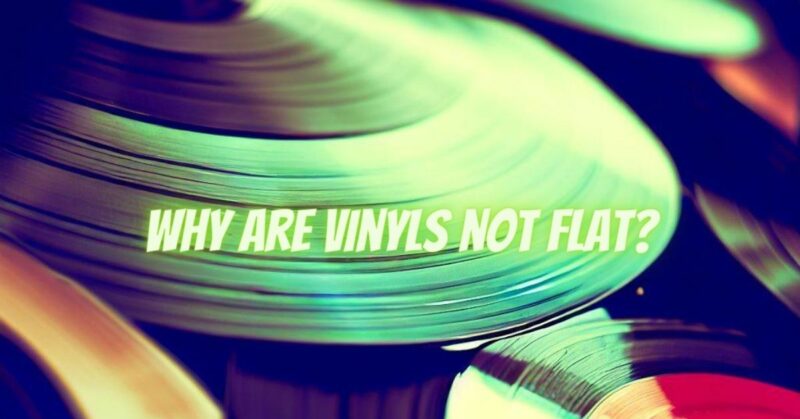Vinyl records, with their warm sound and tactile appeal, have long been a cherished format for music enthusiasts. One distinctive characteristic of vinyl records is their inherent curvature. In this article, we delve into the reasons why vinyl records are not flat, exploring the manufacturing process and the physical properties that contribute to their unique shape.
- Manufacturing Process:
Vinyl records are created through a meticulous manufacturing process that involves various stages, including mastering, plating, and pressing. During the pressing stage, vinyl material is subjected to high temperature and pressure, causing it to soften and take on the shape of the pressing mold. Once cooled, the record retains its molded shape. However, due to the nature of the process, minor warping or curvature can occur, resulting in records that are not perfectly flat.
- Vinyl’s Composition:
Vinyl records are made from a combination of polyvinyl chloride (PVC) and other additives. PVC is a flexible material that can be molded and shaped when heated. As the record cools and solidifies, it retains a certain amount of residual stress, leading to slight warping or curvature. Additionally, variations in the cooling process or inconsistencies in the vinyl material can contribute to the curvature of the final product.
- Storage Conditions:
Vinyl records can also develop curvature over time due to improper storage conditions. Exposure to heat or direct sunlight can cause records to warp and bend. Additionally, storing records in a vertical position without proper support can lead to sagging or warping. It’s essential to store vinyl records in a cool, dry environment and use proper record storage solutions to minimize the risk of curvature.
- Handling and Usage:
The way vinyl records are handled and used can also impact their shape. Applying excessive pressure, mishandling, or improper placement on a turntable can introduce or exacerbate warping. It’s crucial to handle records with care, avoiding any unnecessary stress or pressure that could contribute to curvature.
- Record Player Setup:
The setup and adjustment of the turntable and tonearm can also influence the playback of vinyl records. If the tracking force or anti-skate settings are not properly calibrated, excessive pressure or incorrect stylus alignment can exacerbate the curvature issue or cause additional tracking problems. Ensuring that your turntable is properly set up and maintained can minimize any potential negative effects on playback caused by record curvature.
Conclusion:
The curvature of vinyl records is a result of the manufacturing process, vinyl’s composition, storage conditions, and handling. While minor warping or curvature is common, it typically does not significantly impact playback quality or cause damage to the record. Proper storage, handling, and record player setup can help mitigate any potential issues related to record curvature. Ultimately, the unique shape of vinyl records adds to their charm and distinctiveness, reminding us of the craftsmanship and physicality inherent in this beloved analog format.


